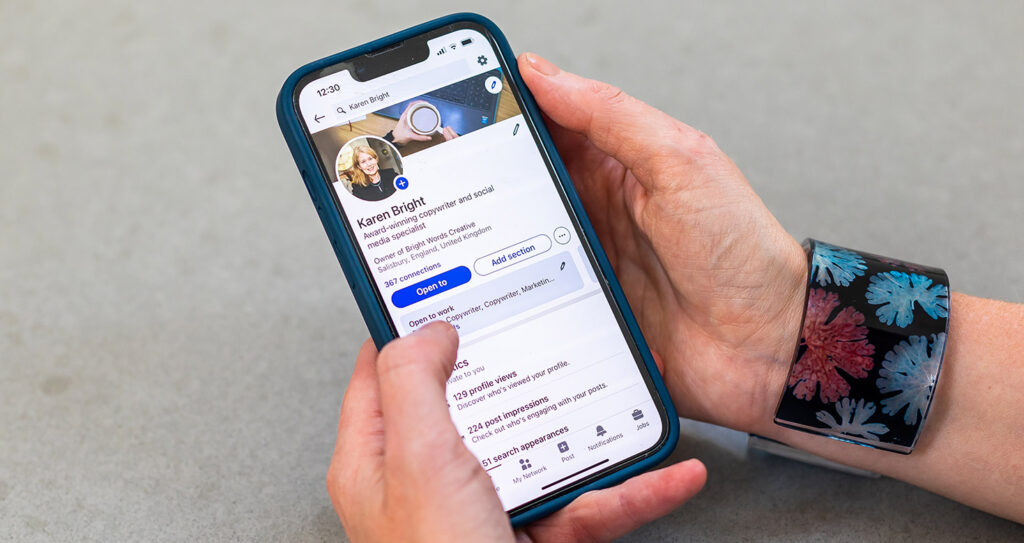Nine out of ten people are sticking to the UK Government’s ‘stay at home’ measures during the lockdown, according to a new study commissioned by Imperial College London.
The study suggested that people in the UK performed better in this respect than people in almost every country, except Italy and Spain – which have even tougher lockdown measures in place.
Getting the message through to the public
Whether or not you agree with the Government’s approach to the coronavirus, the study indicates that the message is getting through to the general public – with the exception of a few ‘covidiots’ who are flouting the rules.
I’ve previously written about the current government’s strange approach to communications in my blog, ‘Plain English, pedantry and power’. But, setting politics aside, I’ve been impressed by the communications campaign around this pandemic. In particular, I’ve been struck by the communication skills of the Government’s scientific and medical experts who are fronting this campaign. First, there’s Professor Chris Whitty – the Government’s Chief Medical Officer (CMO) – also known as the ‘geek-in-chief’.
This guy has a huge burden resting on his shoulders. His advice (and that of his team) is guiding the whole UK Government strategy and its success (or otherwise) will determine how many lives are lost in this pandemic. A huge burden of responsibility that I’m sure is not lost on him.
Professor Whitty is a physician, epidemiologist and one of the UK’s leading infectious disease experts – so he’s definitely the right man for the job. He led the UK’s response to the Ebola effort in 2014 during his time as Chief Scientific Adviser at the Department for International Development – and he is widely respected in the medical community.
Professor Whitty was only appointed to the CMO role in October 2019. Surprisingly, until the coronavirus pandemic emerged, Whitty has never conducted broadcast interviews or held press briefings. Yet, several times each week this cool-headed medic provides calm, measured information and updates at the Government’s press briefings – explaining the medical facts in plain English that we can all understand. Hyperbole and spin are not his thing.
Professor Whitty has the same down-to-earth, cautious and evidence-based approach that characterises many of the medics and scientists I’ve worked with during my comms career.
Keeping the public safe
Whitty has even fronted a national TV advertising campaign – explaining how the public can keep themselves and their families safe – which has appeared during many ad breaks over the past few weeks.
Whitty has been supported in this task by other members of his team, including Dr Jenny Harries – the Deputy CMO. In common with her boss, Dr Harries has emerged as a top-class communicator during the current pandemic – providing clear, honest and concise answers to many of the difficult questions that are being raised at the daily press briefings.
Dr Harries never sugar-coats the message. When she stated that social distancing may need to be in place for six months, her comments attracted widespread comments in the media. Should we really be telling people that they may not be able to meet or socialise for such a long time? But, in fact, this straightforward, direct approach has been the hallmark of the Government’s communication campaign during the coronavirus pandemic.
The success of the campaign has, in my view, pivoted on the Government’s ‘tell it as it is’ approach – not something you’d usually associate with Government briefings.
Yet this has been a feature of all the Government briefings since the start of the outbreak. Just reflect on the Prime Minister’s words from 12 March – more than 10 days before the lockdown:
“It’s clear that the coronavirus will continue to spread across the UK and the world over the next few weeks…it’s now a global pandemic. This is the worst public health crisis for a generation.“I must level with you and the British public – many more families in this country are going to lose loved ones before their time.”
This last comment appeared on the front cover of many of the national newspapers – forcing us to see that the coronavirus wasn’t just something happening overseas or on our TVs. It was already in our communities and posing a real threat.
Address to the nation
Boris Johnson’s subsequent TV address, announcing a national lockdown, was watched live by more than 27 million people across the UK. This was one of the largest audiences in UK broadcasting history – surpassing the news coverage of JFK’s assassination, the 1969 moon landings and the 2012 Olympics.
Whatever you think of Boris Johnston as a politician, he is a first-rate communicator. His clear, concise and direct approach has clearly resonated with many people in the UK. The ‘Stay Home, Protect the NHS, Save Lives’ message has hit home. You see it everywhere – on posters, in shop windows and hashtags.
Mostly, people understand the reasons for lockdown and the importance of following social distancing measures.
The Government followed up this nationwide address with UK-wide text message alerts and a national mailout from No 10 explaining why it’s so important to stick to the rules. Many were critical of the mailout – it cost £5.8 million to send this to every household in the UK. But, for me, it was crucial because so many people (like my own 88-year-old godmother) are not online – and won’t see these digital awareness campaigns.
Aside from the Government’s own officials, I would also like to mention one other expert in this blog. And that’s Professor Karol Sikora. You may or not have heard of him. If you’re active on Twitter, it’s highly likely that you’ve seen some of his posts. Over the past few weeks, Professor Sikora’s daily Twitter updates have been widely shared.
An oncologist for more than 50 years, Professor Sikora is a former director at the World Health Organization’s Cancer Programme. He joined Twitter only last month to raise awareness of the plight of cancer patients during this pandemic. But, his honest, direct and informative posts on the coronavirus has garnered widespread praise – earning him 115k followers in just four weeks. He’s provided something that’s been in rather short supply of late – positivity.
Professor Sikora puts the daily stats on infection rates, hospitalisations and deaths in a wider context – helping us to understand the long-term goals.

He’s offered his own insights on when he thinks the UK may be able to relax some of its lockdown measures. He’s used the easing of restrictions in Europe as a positive sign that the UK should be able to follow a similar path in a matter of weeks.
His posts appeal to his followers on a very human level – not just as a scientist. Here is a message he tweeted over the Easter weekend:

Professor Sikora is tapping into our collective desire to come together as a nation to fight this invisible enemy and eventually return to some form of normality.
Every day, Professor Sikora is inundated with messages from those who are finding comfort in his positive attitude and posts. I would highly recommend following Professor Sikora for his well-informed insights.

He seeks to provide some rays of hope in a truly devastating situation – helping us to see that there is some light at the end of a very dark tunnel.



